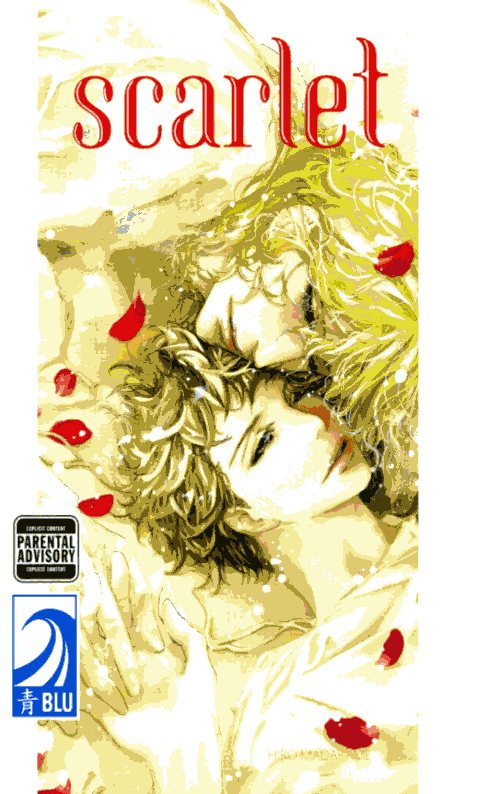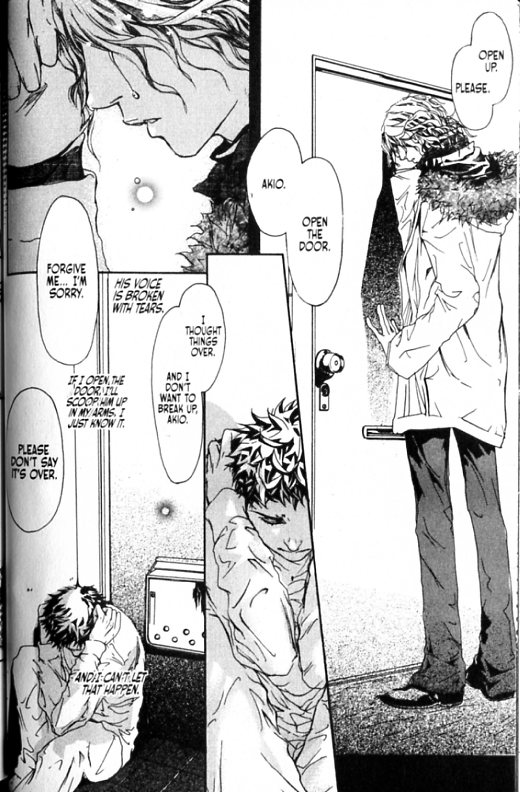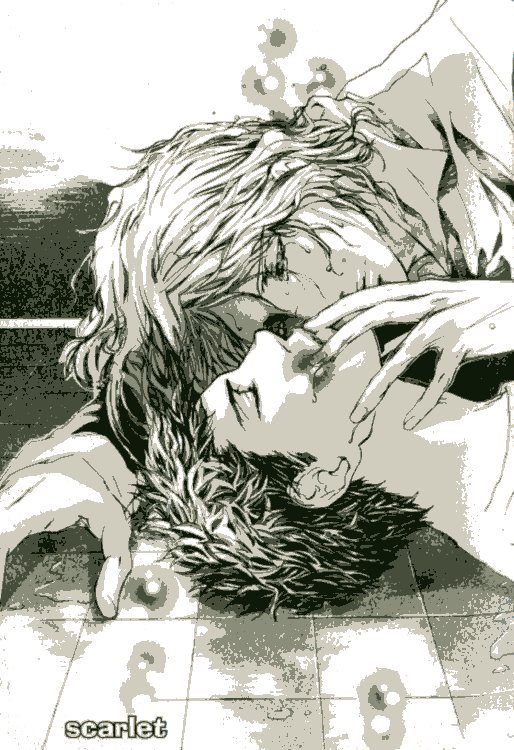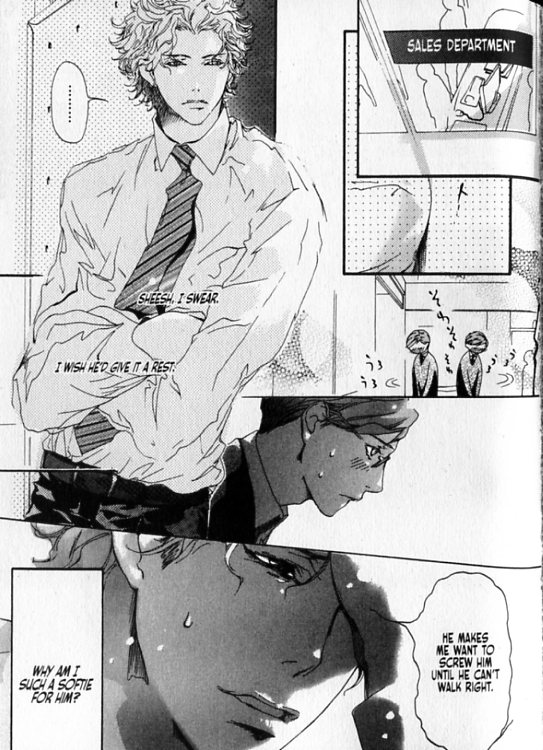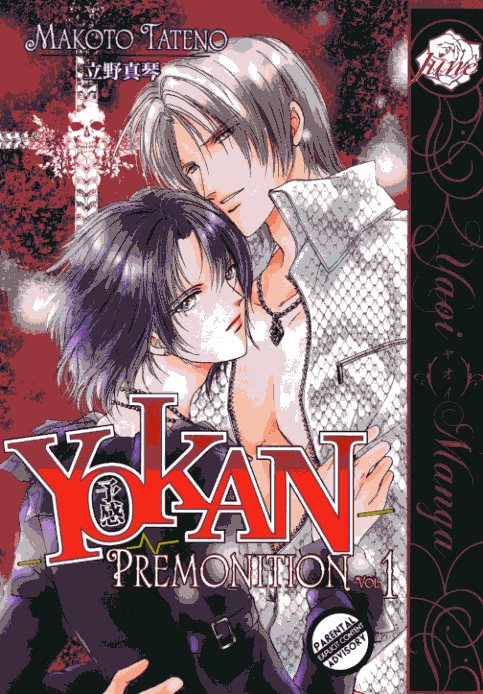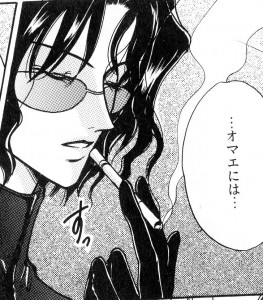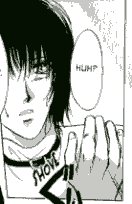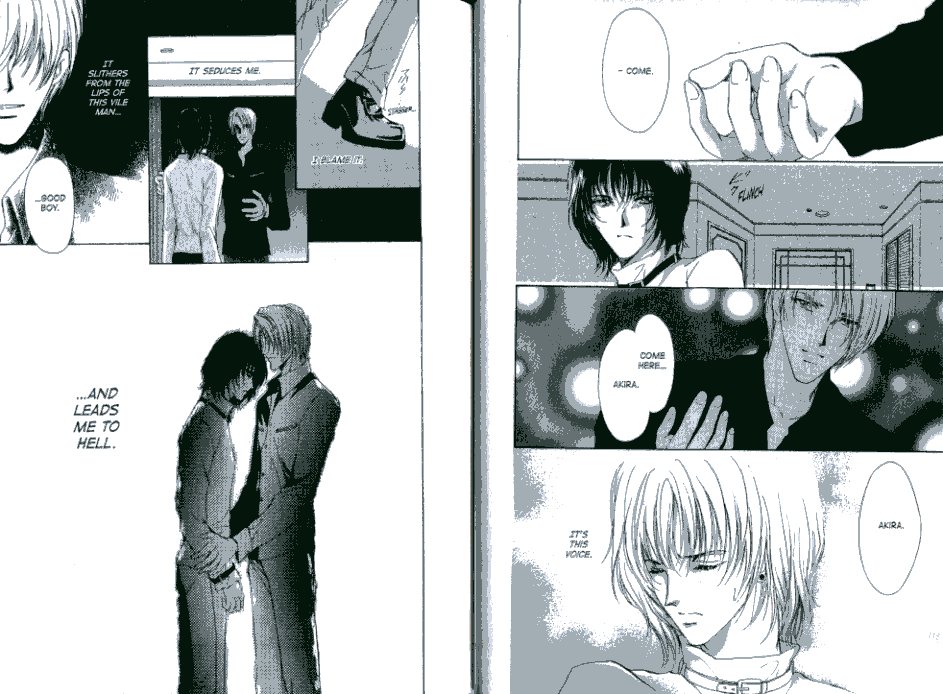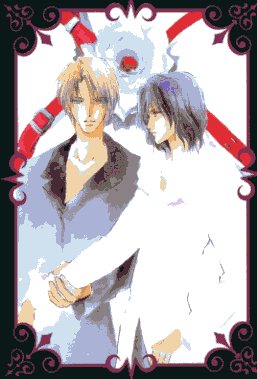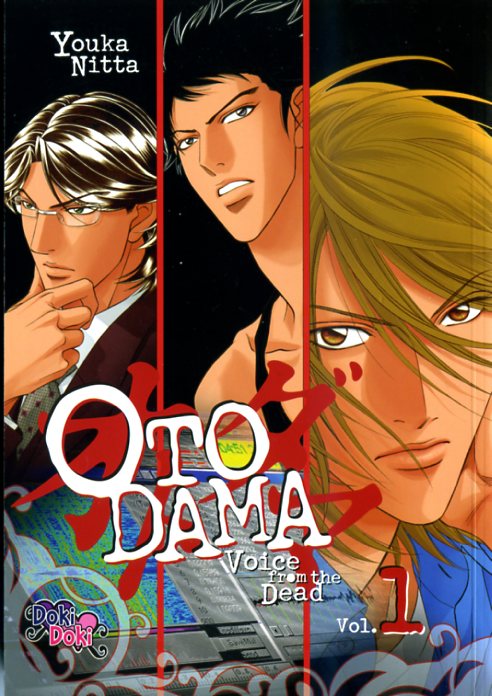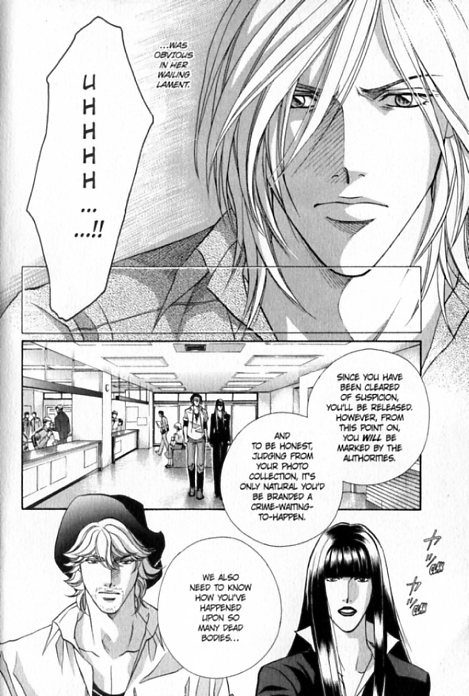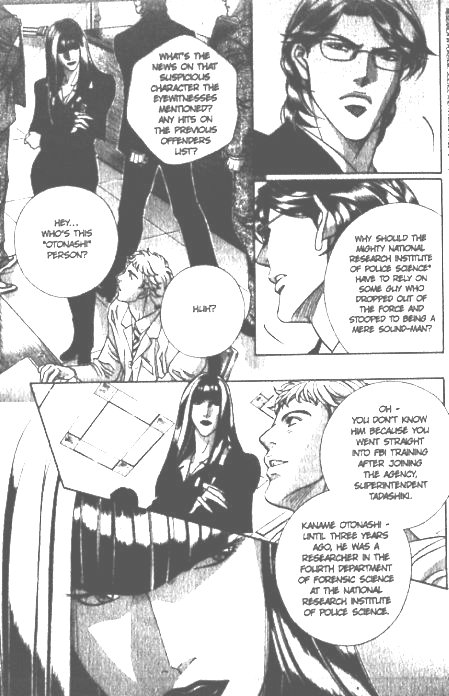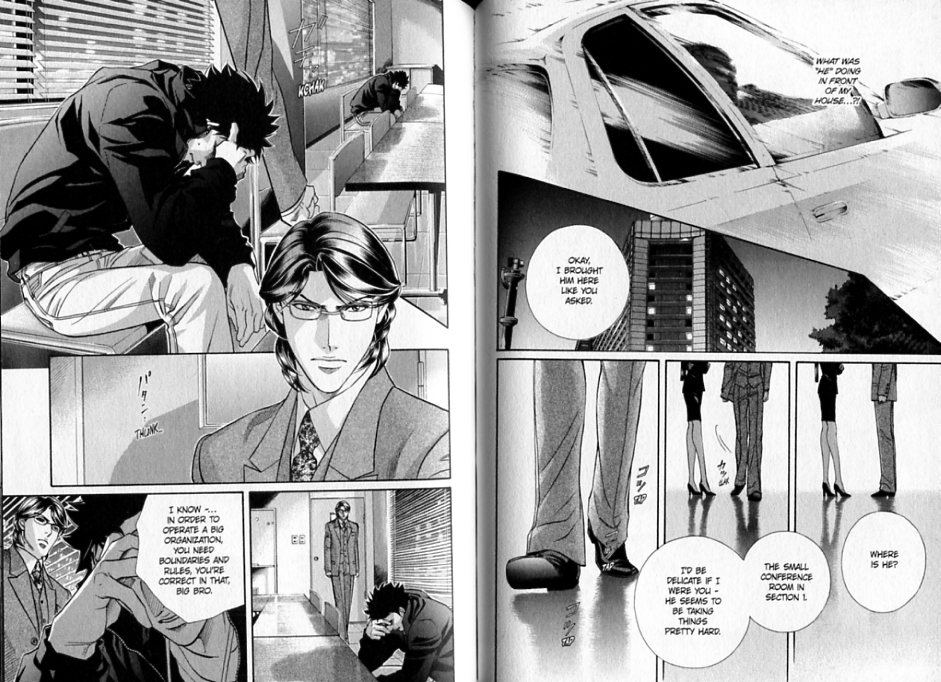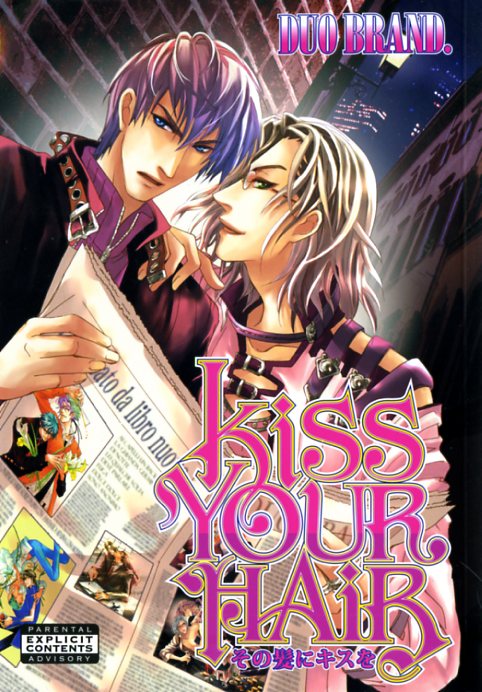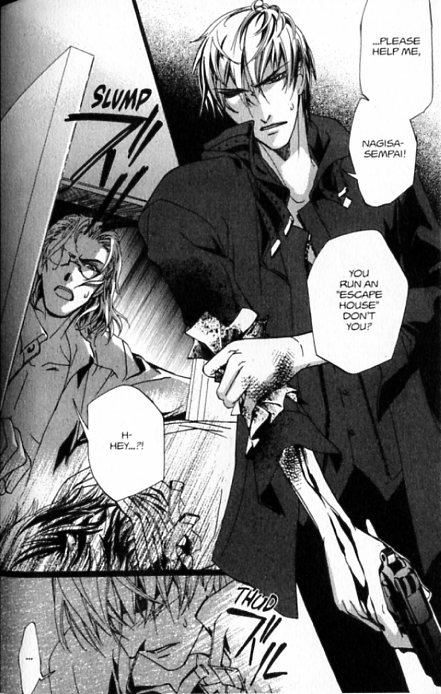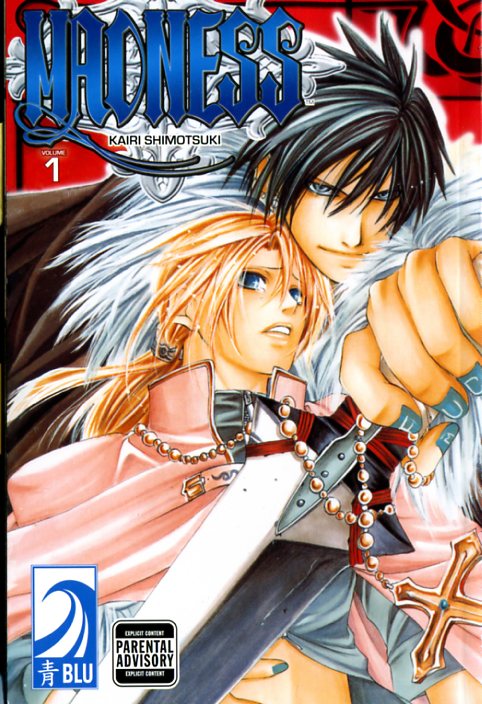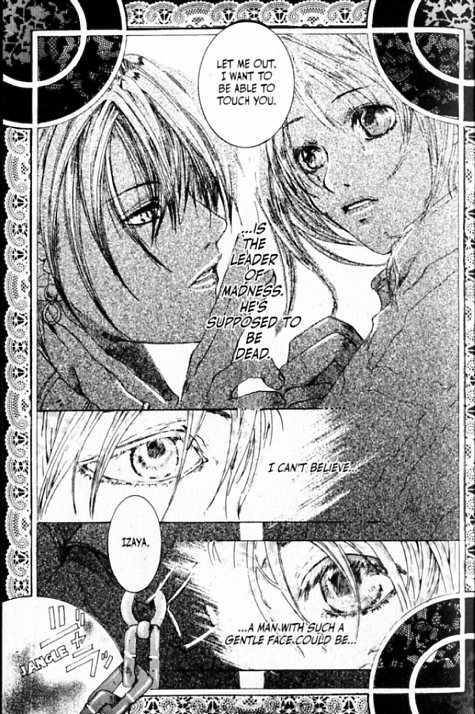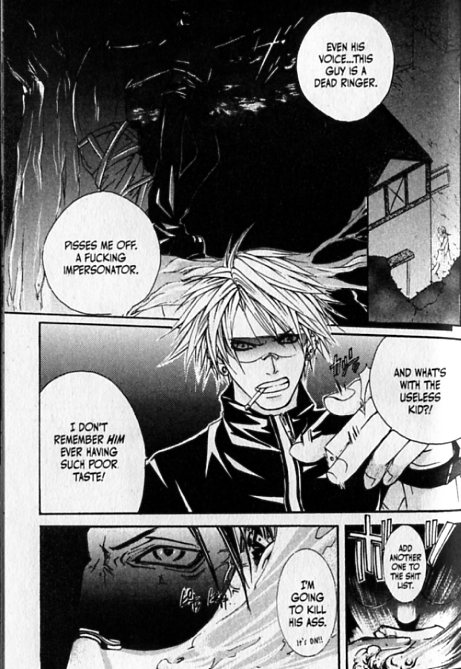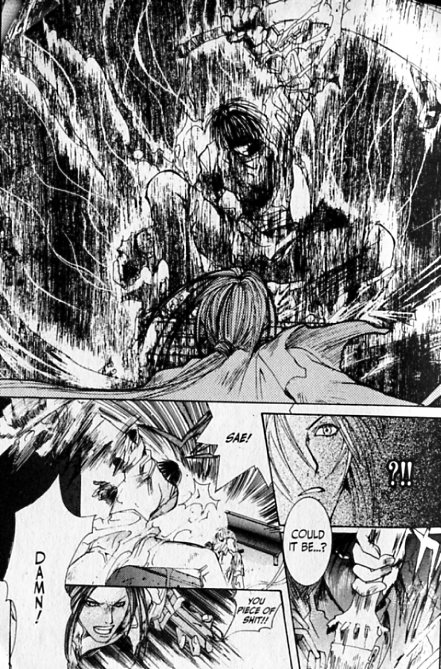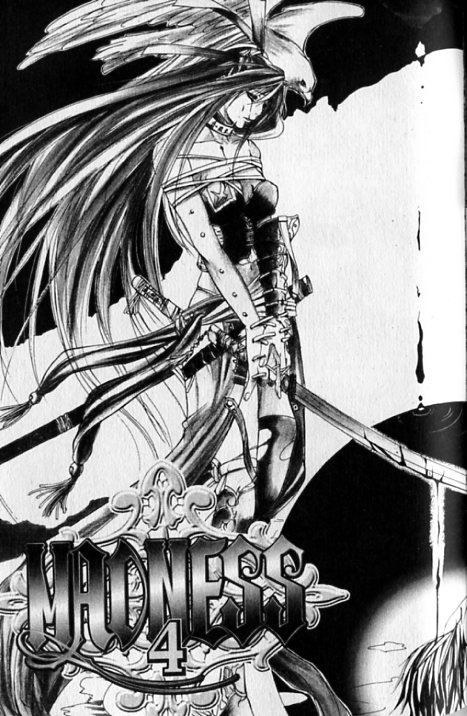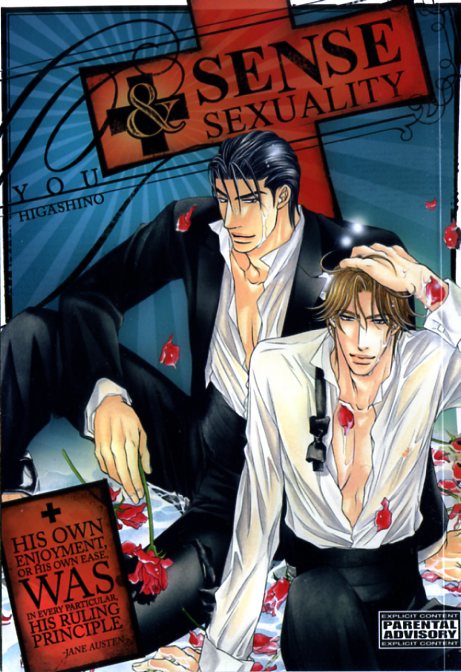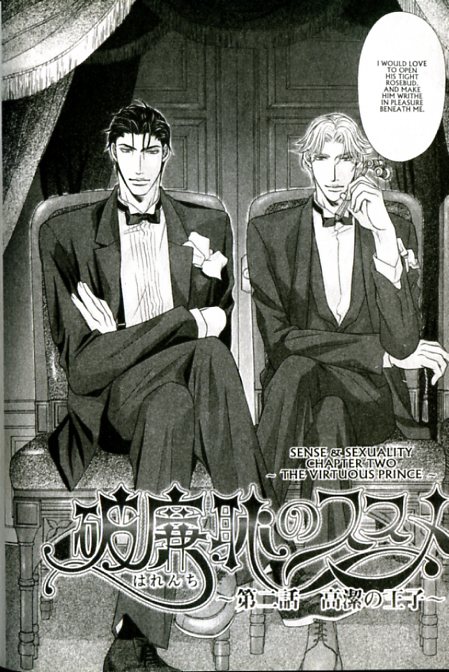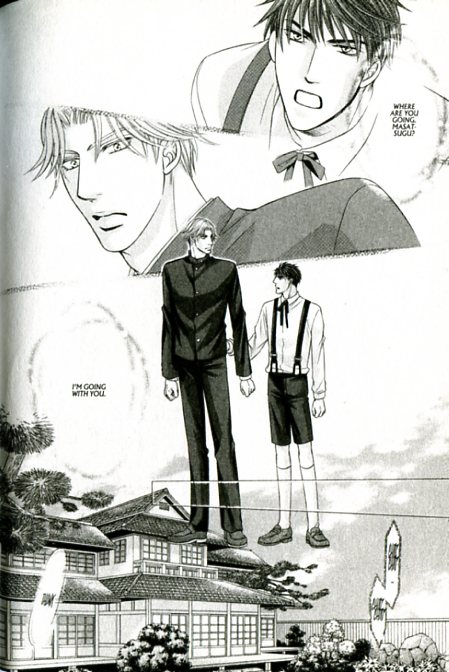Hiro Madarame, 2010, BLU
Pretty! Pretty, pretty, pretty!
That is all.
No, of course it isn’t. You didn’t believe that, did you? Really.
There are a couple of multi-chapter stories in Scarlet, and they are – odd. I honestly don’t even know what I mean when I say a yaoi story is odd – I mean, they range from full-on crack to quasi-realistic depictions of human existence (leaning heavily toward the crack, of course). I suppose this one is an unexpected mixture of the two. Which makes it not only pretty but worth reading, as well.
The first story arc, for which the book is named, kind of messed with me. It’s about Akio, who is a nice guy, and Ryo, who is not. But it’s not simple. Ryo looks like a beautiful, aloof womanizer, but he is in fact a shy, lonely mess. Well, he is beautiful, and certainly a cheat. But mostly a lonely mess. He starts following Akio like a puppy after Akio makes the only offer of friendship Ryo receives after moving to a new school. They become lovers, by Ryo goes out with any girl who approaches him. He has epically poor judgment and impulse control. He is also largely unable to take responsibility for himself, and he’s a big crybaby as well. One is left kind of wondering why Akio, who seems like a pretty normal, together guy, keeps putting up with this shit. Except that one might possibly remember what it’s like to be young and desperately in love.
Anyway, Ryo makes love to Akio and then leaves him hanging because some girl asks him out. The pattern repeats itself over and over, and Akio is pretty much OK with it. He obviously loves Ryo, and he understands that Ryo is fucked up, and that’s how it is.
Things more or less work out, until Ryo hooks up with Tae, who is one cold bitch by anybody’s standards. And a truly disturbing plot twist ensues. It’s more than hinted at on the first page of the manga, but I’ll just say there’s a bizarre and distasteful bit of violence, and the resolution, while played as a mostly happy ending, is perhaps even more disturbing for that. Because they wind up together, and Akio is, as I said, a nice guy, and Ryo is an unstable freak.
This all sounds unpleasant, and it is. But what intrigues me is that Madarame manages to also convey the love and the tenderness in this relationship. This story contains some really moving romantic bits. Some of the panels are breathtaking – beautiful lines, deftly physical poses, and very hot sex. Her kinetic style (did I really just write that? “Her kinetic style”? Good grief.) really conveys Ryo’s frantic clinging, and Akio’s helpless love for him. (There are also a lot of hyper-deformed panels – I mean, a lot a lot – which I’m not especially into, although I’d like it less if it didn’t fit so well with all the frenetic pushing and pulling throughout the story.)
The second story, “One Night Stand,” is much less worrisome, while retaining the troubled intimacy I liked so much in “Scarlet” (the story). Nobody appears to be mentally ill, for example. I don’t rule that out the way I do, say, a young-looking boy with big eyes and short shorts, but if the character does actually seems psychotic, that is, well, grueling. So I was ready for a break. The second story is all about repressed passion. A nondescript young salaryman, Harumi, watches a not-nondescript hottie in the elevator every day, working himself up into a (very quiet-looking) fervor. When he sees said hottie, whose name is Toki, in a gay club one night, he’s built up enough steam that he can’t help going after him. Toki is there on a dare, and Harumi isn’t wearing his glasses, and as everyone who’s ever seen Superman knows, people are completely unrecognizable when they have their glasses on. So Harumi assumes he’s safe; he’ll live his fantasy for one night, or try to, and go back to stalking Toki in the elevator with no one the wiser.
Um, sure. Whatever. Toki is interested and goes to a love hotel with Harumi, and some really nicely imagined and beautifully rendered sex ensues. It is lovely, gentle, and hot.
The next day, Harumi is shocked – shocked – that Toki recognizes him. Toki stays on the elevator past his floor, waiting for everyone to get off, and then says, “Good morning, Harumi.” Such small details, but the body language conveys the swirl of emotion they’re both feeling. Harumi tells Toki he must have him confused with someone else, and Toki says, “So that’s how it is. Sorry.” No! The agony! The longing! Oh, it’s delicious. Harumi wrestles with his disappointment and his need and his shyness after that moment, but he can’t get up the courage to change things. Until he sees Toki at the bar again one night, when all the bottled-up emotions come out and he makes a scene. Tender declarations and hot sex ensue. Very satisfying. There’s a short third chapter, an epilogue told from Toki’s point of view, which is less heaving with terrified lust and more, er, straightforward. Which is obviously the wrong word. But it’s a refreshing ending to a very cute story.
There’s another short sequence at the end, about a hot player who’s slowly and gracelessly coming to terms with having fallen hard for a dork. This appeals to me for obvious reasons.
Scarlet is a beautiful book. The cover is beautiful, the color splash page is beautiful, and the art is beautiful. I really hadn’t expected to like it; this was one of my “I’m so smitten by the cover I’m going to buy it anyway, even though I’ll hate myself in the morning” purchases. Sometimes those lapses in judgment work out after all.

